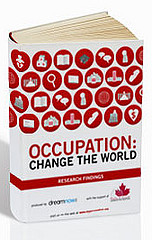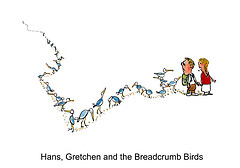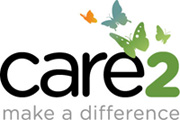|
|
|
Archive for August, 2012
Friday, August 31st, 2012
 Do you consider yourself a good communicator? Do you consider yourself a good communicator?
Do you provide clear, concise, useable information and instructions to your people?
Are you sure?
Or are they clear, concise and useable inside your head, but your people hear something different?
The same words mean different things to different people, so what you say and what your team hears may be “off” one degree or ten degrees (or more) creating development problems and missed opportunities, not to mention tensions and negative reactions.
Obviously, the goal is to clarify your communications, but it’s not enough to “spell it out” if you spell in Latin and your people hear in Russian, Finnish, Kligon, whatever.
One of the unspoken tenets of good leadership/management is that understandable communications are the boss’ responsibility.
That’s you.
Option Sanity™ means clarity for ISO.
Come visit Option Sanity for an easy-to-understand, simple-to-implement stock allocation system. It’s so easy a CEO can do it.
Warning.
Do not attempt to use Option Sanity™ without a strong commitment to business planning, financial controls, honesty, ethics, and “doing the right thing.”
Use only as directed.
Users of Option Sanity may experience sudden increases in team cohesion and worker satisfaction. In cases where team productivity, retention and company success is greater than typical, expect media interest and invitations as keynote speaker.
Flickr image credit: HikingArtist
Posted in Communication, If the Shoe Fits | No Comments »
Thursday, August 30th, 2012
 As you might imagine, I do a lot of reading about innovation, new products and startups. As you might imagine, I do a lot of reading about innovation, new products and startups.
I have to say that too many are mind-numbingly boring and irrelevant when considered in the long-term—or even the shorter-term.
Whether it’s the (supposedly) hottest in Silicon Valley or Silicon Alley (AKA NYC) how many do you think will matter three or four years from now, let alone in a decade or more?
Many of them sport pedigrees from Tech Stars, Founders Fund, 500 Startups and Y Combinator, which only goes to show that, as with education, graduating from a top-ranked institution doesn’t assure meaningful success. (Be sure to read the comments and you’ll see my disdain is shared by many.)
Now compare them with the startups incubated, nurtured and seeded by Rock Health and Fledge.
Rock Health looks for “Big ideas executed by smart and driven entrepreneurs, to really move the needle in healthcare. Ideas should be addressing large problems in the system, with a business model that is sustainable and scalable.”
Fledge looks for “…companies looking to address the needs of increasingly health, environment and sustainability-conscious consumers in a variety of ways.”
Granted the ideas on Fledge are hyper-local and may not be world-changing at first glance, but if locally applicable iterations spread across the globe then world-changing they would be.
I’m also fully aware that many of the startups I shrug off will make money and be acquired, but it’s doubtful they will make history—even as a footnote.
If you plan/want to found a company why not look for a real need as opposed to a faux one and develop a product or service to address it; the same thing applies when choosing a place to work.
That’s how you change the world.
And just for fun take a look at products you couldn’t live without—from penicillin to Post-its to pacemakers—that all came about because of mistakes, accidents and carelessness that didn’t go unnoticed.
SUBMIT YOUR STORY
Be the Thursday feature – Entrepreneurs: [your company name]
Share the story of your startup today.
Send it along with your contact information and I’ll be in touch.
Questions? Email or call me at 360.335.8054 Pacific time.
Flickr image credit: cambodia4kidsorg
Posted in Entrepreneurs, Innovation | No Comments »
Wednesday, August 29th, 2012
 Do you look for peer reviews, such as those on Yelp, Amazon and most consumer sites, before buying the product, visiting the restaurant or booking the hotel? Do you look for peer reviews, such as those on Yelp, Amazon and most consumer sites, before buying the product, visiting the restaurant or booking the hotel?
Before the Internet we asked our friends and checked critics’ comments in newspapers and magazines, in order to increase the odds for a favorable experience.
These days we check the Internet.
“The wheels of online commerce run on positive reviews,” said Bing Liu, a data-mining expert at the University of Illinois, Chicago (…) Mr. Liu estimates that about one-third of all consumer reviews on the Internet are fake.
Consumer reviews are powerful because, unlike old-style advertising and marketing, they offer the illusion of truth. They purport to be testimonials of real people, even though some are bought and sold just like everything else on the commercial Internet.
Do rankings based on the number of followers people have influence your trust level or opinion of them? But how do you know they are real?
And it’s not just ego-driven blogger types. Celebrities, politicians, start-ups, aspiring rock stars, reality show hopefuls — anyone who might benefit from having a larger social media footprint — are known to have bought large blocks of Twitter followers.
Are you impressed when someone’s Facebook wall is filled with beautiful people?
They are for sale, too.
His idea, he said, was “to turn cyberlosers into social-networking magnets” by providing fictitious postings from attractive people. The postings are written by the client or by Mr. Walker and his employees, who base the messages on the client’s requests.
If having to choose between being a chump and a cynic isn’t up your alley, perhaps the best advice when it comes to reviews, followers and friends is ‘buyer beware’ and ‘if it seems to good to be true it probably is’.
Flickr image credit: birgerking
Posted in Business info, Personal Growth | No Comments »
Tuesday, August 28th, 2012
 Recently Fast Company told the story of why the acquisition of Ben & Jerry’s worked for the giant Dutch conglomerate Unilever. Recently Fast Company told the story of why the acquisition of Ben & Jerry’s worked for the giant Dutch conglomerate Unilever.
The reason boiled down to two words: Yves Couette—the man Unilever put in as CEO—and how he maintained the culture and customer focus even as he streamlined and moved the company in new directions.
Several years ago I wrote about being ‘cultureblind’ and used Home Depot and its new CEO Bob Nardelli as a prime example of what happens when the new boss trashes the culture and more or less abandons customer service.
Last week a new article focused on how Home Depot turned itself around by harking back to its pre-Nardelli culture of customer service.
Compare the difference between Couette and Nardelli and you will have a perfect template of what to do and what not to do as a new boss no matter what level you are on.
So the next time you take over a new group, whether as CEO or a newly minted team leader, remember this useful mantra along the lines of ‘you are what you eat’: ‘culture drives profit’.
Flickr image credit: Bruce Fingerhood
Posted in Culture, Ducks In A Row | No Comments »
Monday, August 27th, 2012
 I don’t believe in “leaders.” Over the years I’ve spoken out many times against the idea that leaders are anointed and graced with special abilities, but am a big proponent of people showing initiative when it makes sense and stepping up to lead because they are the best person at that point. I don’t believe in “leaders.” Over the years I’ve spoken out many times against the idea that leaders are anointed and graced with special abilities, but am a big proponent of people showing initiative when it makes sense and stepping up to lead because they are the best person at that point.
Believing in initiative means I don’t believe in “followers.”
Followers rarely show initiative, make decisions or speak out when they disagree.
Followers have abdicated responsibility in favor of their “leader.”
Rather than saying the same stuff I’ve said before I thought you might ‘hear’ it better from someone like David Marquet, who, as the new captain of the nuclear powered submarine USS Santa Fe, “thought I would be a leader who empowered his subordinates.”
His wake-up call came when he ordered an action that couldn’t be done, but the officer passed it on anyway because he was told to by his “leader.”
Marquet offers first person proof that real “leadership” and “empowerment” don’t occupy the same space as “followers.”
I sincerely hope you will take the few minutes to click over and read something that could (should) have a profound effect on your management approach.
My thanks to Dan McCarthy at Great Leadership for including this guest post on his blog.
Flickr image credit: HikingArtist
Posted in Leadership, Personal Growth | No Comments »
Sunday, August 26th, 2012
 I find looking back at stats and happenings in a given year is always interesting. Not just for big happenings, but for an overview of that world. I had no real reason to choose 1953; it has no special significance to me, but here is a snapshot of the US in 1953. I find looking back at stats and happenings in a given year is always interesting. Not just for big happenings, but for an overview of that world. I had no real reason to choose 1953; it has no special significance to me, but here is a snapshot of the US in 1953.
The biggie was the end of the Korean War.
Ernest Hemmingway won the Pulitzer Prize for The Old Man and the Sea.
A guy named John married a gal named Jackie.
Living facts:
- The average wage was $4000/year;
- an average house cost $9500;
- an average car cost $1600; and you could
- fill it up for 20 cents a gallon.
But for all that I still wouldn’t want to go back to a 1953 world.
Image credit: Five Starr Photos
Posted in Oddball Facts | No Comments »
Saturday, August 25th, 2012
 Today we look at what’s going on in and around your head. Today we look at what’s going on in and around your head.
According to current research, being an overconfident, rude jerk is a great way to get ahead and have people look up to you. (In reality this only applies to men.)
In other words, overconfident people are perceived as having more social status, and social status is golden. (…) …research suggests that we also see rudeness as a sign of power.
Offended? Good. Because before you decide that jerkism is your best path to success see why it doesn’t really work most of the time
For all their charisma, bravery and bravado, jerks don’t do as well as you might think.
Jerkism covers a multitude of sins including positive thinking (free registration required), especially when it holds 110% sway over the minds of leaders.
But several recent studies have critiqued the positive thinking movement, highlighting the negative personal and organizational effects (…) In short, Prozac leaders can wind up believing their own narrative that everything is going well.
People spend large amounts of time these days trying to assimilate all the available information applicable to their job, project, etc, because it will improve their results. But maybe that’s not such a good thing; instead consider the idea of two lists.
It’s hard to do because maybe, just maybe, that next piece of information will be the key to our success. But our success actually hinges on the opposite: on our willingness to risk missing some information. Because trying to focus on it all is a risk in itself. We’ll exhaust ourselves. We’ll get confused, nervous, and irritable.
What will your life be like as you age in an era of DIY toughness? If you are lucky, EngAGE, a program that enhances life for the 99% will become a model.
“We see people without money, who had very hard lives, who are not aware of their own potential,” said Maureen Kellen-Taylor, the chief operating officer of EngAGE, a program in the Los Angeles area that provides arts and other classes for some 5,000 people — the vast majority of them low-income — living in senior apartment communities.
Flickr image credit: pedroelcarvalho
Posted in Expand Your Mind | No Comments »
Friday, August 24th, 2012
A Friday series exploring Startups and the people who make them go. Read all If the Shoe Fits posts here
 David Strickland, administrator of the National Highway Traffic Safety Administration, may not have the kind of background you typically look to as a role model. David Strickland, administrator of the National Highway Traffic Safety Administration, may not have the kind of background you typically look to as a role model.
In this short interview he talks about the attitudes and approaches that worked for him.
I think three of the most important points he makes are in bold with my added commentary.
- Learn to disagree without being disagreeable: disagreeable refers to much more than hostility, anger and raised voices; it includes, but is not limited to, eye rolls, glares, sniffs, snickers, snarky responses and martyred expressions.
- Present a problem and your proposed solution together: you need to hear about every difficulty and challenge your team faces, but it’s better to encourage your people to think them through and present possible solutions along with the problem, instead of having them come across like complaints.
- You are not bigger than the mission: even if you’re the founder. Once other people buy into your vision the mission becomes larger. You are not the sun; decisions should be based on what is best for the mission, whether or not they are best for you.
You’ve probably heard them before, but that doesn’t mean they sank in or that you are practicing them.
I find many younger entrepreneurs tend to write off people like Strickland, because of his age, experience or work; they prefer role models from their peers or with high profiles.
More fools they.
Option Sanity™ supports the mission.
Come visit Option Sanity for an easy-to-understand, simple-to-implement stock allocation system. It’s so easy a CEO can do it.
Warning.
Do not attempt to use Option Sanity™ without a strong commitment to business planning, financial controls, honesty, ethics, and “doing the right thing.”
Use only as directed.
Users of Option Sanity may experience sudden increases in team cohesion and worker satisfaction. In cases where team productivity, retention and company success is greater than typical, expect media interest and invitations as keynote speaker.
Flickr image credit: HikingArtist
Posted in If the Shoe Fits, Leadership, Personal Growth | No Comments »
Thursday, August 23rd, 2012
 Writing as a guest at HBR Lara Galinsky, senior vice president of Echoing Green, a non-profit that funds social entrepreneurs globally, uses the story of a woman she mentored years ago to demonstrate that being a social entrepreneur doesn’t always mean starting a company. Writing as a guest at HBR Lara Galinsky, senior vice president of Echoing Green, a non-profit that funds social entrepreneurs globally, uses the story of a woman she mentored years ago to demonstrate that being a social entrepreneur doesn’t always mean starting a company.
Galinsky says that if every person who wanted to change the world did so by starting a company there would be no one to work at or support those companies.
She argues that social entrepreneurship is just as much a way to live your life as to build a company.
I agree with everything she says except…
Galinsky constantly refers to young people just starting out and the need to encourage and support their efforts.
I think her message applies to people of all ages.
I do not believe that only the young can effect change.
In fact, change is driven faster when people of all ages embrace and actively encourage the change as opposed to dragging their feet or actively fighting a reactionary battle.
I really don’t believe that Mahatma Gandhi had a specific age in mind when he said, “Be the change you want to see in the world.”
You can be a social entrepreneur at any age, whether you do it by starting a company or living a socially responsible life, just do it.
SUBMIT YOUR STORY
Be the Thursday feature – Entrepreneurs: [your company name]
Share the story of your startup today.
Send it along with your contact information and I’ll be in touch.
Questions? Email or call me at 360.335.8054 Pacific time.
Flickr image credit: Care2
Posted in Entrepreneurs, Personal Growth | No Comments »
Wednesday, August 22nd, 2012
 I met “Sue” (not her real name) in the late 1990s when I lived in San Francisco and we were friends for more than a decade. I met “Sue” (not her real name) in the late 1990s when I lived in San Francisco and we were friends for more than a decade.
Perhaps I should say that she considered me her best friend, “like a sister,” while I considered her more of a long-term acquaintance.
Why the difference?
Because while I listened to her difficulties, offered support and advice when requested there was little reciprocation and less empathy coming my way.
What escalated over the years were the complaints.
Complaints about people, situations, problems; many were real, while some were self-made—the result of her own actions.
She had no interest in brainstorming solutions, didn’t bother sharing the positive things that did happen and when I mentioned them she would rant on that they were too little and cite every negative about them.
As the complaining increased my desire to interact decreased.
When she questioned my withdrawal I told her that I had enough challenges in my own life and her negativity was exacerbating them she accused me of not caring or making any effort to understand what she was going through.
Knowing the challenges and real horrors Sue has overcome in her life I have enormous respect for her, but that didn’t outweigh my desire to eliminate the negativity from my life and earlier this year I severed connections with her.
All this flashed in my mind as I read an article by Trevor Blake in Inc.
Even worse, being exposed to too much complaining can actually make you dumb. Research shows that exposure to 30 minutes or more of negativity–including viewing such material on TV–actually peels away neurons in the brain’s hippocampus. “Typically, people who are complaining don’t want a solution; they just want you to join in the indignity of the whole thing. You can almost hear brains clink when six people get together and start saying, ‘Isn’t it terrible?’ This will damage your brain even if you’re just passively listening. And if you try to change their behavior, you’ll become the target of the complaint.” the part of your brain you need for problem solving,” he says. “Basically, it turns your brain to mush.”
It confirmed all my gut reactions, the mental effects I felt and that I’d done the right thing in severing the relationship—even though I did it years later than I should have.
Read the article (it’s short) and then apply as needed—you will be amazed at the quality-of-life difference it will make.
Flickr image credit: foxtongue
Posted in Personal Growth | 4 Comments »
|
 Subscribe to
Subscribe to
MAPping Company Success
About Miki 
Clarify your exec summary, website, etc.
Have a quick question or just want to chat? Feel free to write or call me at 360.335.8054
The 12 Ingredients of a Fillable Req
CheatSheet for InterviewERS
CheatSheet for InterviewEEs™
Give your mind a rest. Here are 4 quick ways to get rid of kinks, break a logjam or juice your creativity!
Creative mousing
Bubblewrap!
Animal innovation
Brain teaser
The latest disaster is here at home; donate to the East Coast recovery efforts now!
Text REDCROSS to 90999 to make a $10 donation or call 00.733.2767. $10 really really does make a difference and you'll never miss it.
And always donate what you can whenever you can
The following accept cash and in-kind donations: Doctors Without Borders, UNICEF, Red Cross, World Food Program, Save the Children
*/
?>About Miki
About KG
Clarify your exec summary, website, marketing collateral, etc.
Have a question or just want to chat @ no cost? Feel free to write
Download useful assistance now.
Entrepreneurs face difficulties that are hard for most people to imagine, let alone understand. You can find anonymous help and connections that do understand at 7 cups of tea.
Crises never end.
$10 really does make a difference and you’ll never miss it,
while $10 a month has exponential power.
Always donate what you can whenever you can.
The following accept cash and in-kind donations:
|
 Do you consider yourself a good communicator?
Do you consider yourself a good communicator?



 As you might imagine, I do a lot of reading about innovation, new products and startups.
As you might imagine, I do a lot of reading about innovation, new products and startups. Do you look for peer reviews, such as those on Yelp, Amazon and most consumer sites, before buying the product, visiting the restaurant or booking the hotel?
Do you look for peer reviews, such as those on Yelp, Amazon and most consumer sites, before buying the product, visiting the restaurant or booking the hotel? Recently Fast Company told the story of
Recently Fast Company told the story of I don’t believe in “leaders.” Over the years I’ve spoken out many times against the idea that leaders are anointed and graced with special abilities, but am a big proponent of people showing initiative when it makes sense and stepping up to lead because they are the best person at that point.
I don’t believe in “leaders.” Over the years I’ve spoken out many times against the idea that leaders are anointed and graced with special abilities, but am a big proponent of people showing initiative when it makes sense and stepping up to lead because they are the best person at that point. I find looking back at stats and happenings in a given year is always interesting. Not just for big happenings, but for an overview of that world. I had no real reason to choose 1953; it has no special significance to me, but here is a snapshot of the US in 1953.
I find looking back at stats and happenings in a given year is always interesting. Not just for big happenings, but for an overview of that world. I had no real reason to choose 1953; it has no special significance to me, but here is a snapshot of the US in 1953. Today we look at what’s going on in and around your head.
Today we look at what’s going on in and around your head. Writing as a guest at HBR Lara Galinsky, senior vice president of
Writing as a guest at HBR Lara Galinsky, senior vice president of  I met “Sue” (not her real name) in the late 1990s when I lived in San Francisco and we were friends for more than a decade.
I met “Sue” (not her real name) in the late 1990s when I lived in San Francisco and we were friends for more than a decade.
